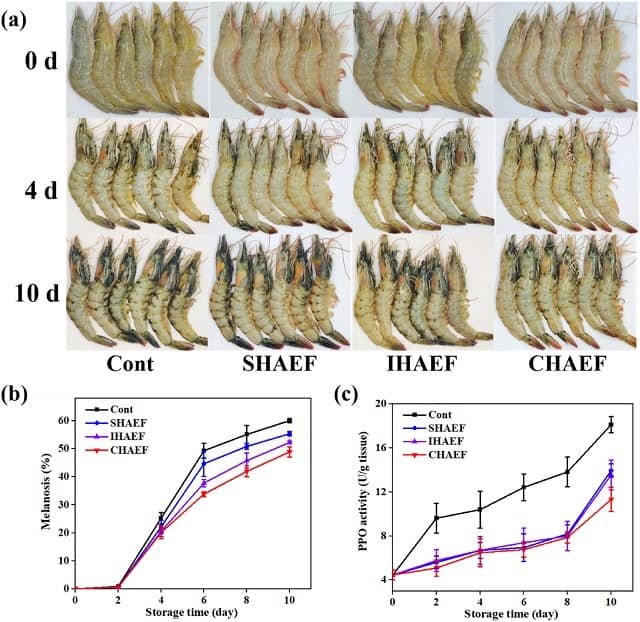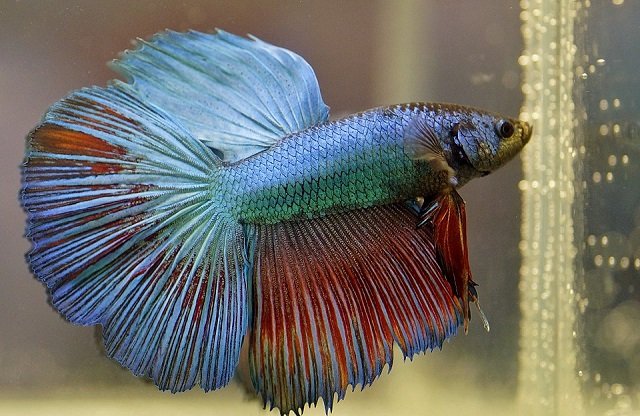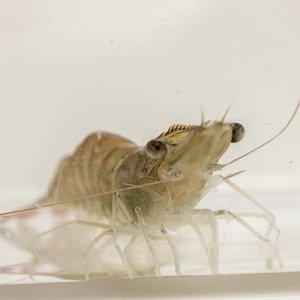
To extend the shelf life of perishable foods, researchers have turned to innovative non-thermal technologies. One promising method is the use of high-voltage alternating electric fields (HAEF).
A recent study published in Food Control by scientists from the College of Food Science and Engineering and Ocean University of China has demonstrated the effectiveness of HAEF in preserving the freshness and quality of Pacific white shrimp (Litopenaeus vannamei) during partial freezing storage. This breakthrough could revolutionize how we store and transport seafood, reducing waste and improving food safety.
The challenge of shrimp preservation
Pacific white shrimp is a highly valued seafood product, appreciated for its flavor and nutritional benefits. However, it is highly perishable and prone to rapid deterioration due to microbial contamination and enzymatic activity.
Traditional preservation methods, such as freezing and chemical additives, often compromise the shrimp’s texture and nutritional quality and may pose health risks. Partial freezing (PF), which keeps the product at temperatures just below its freezing point (around -3°C), has emerged as a promising alternative. PF minimizes ice crystal formation, reducing damage to muscle fibers and water loss while inhibiting microbial growth and enzymatic activity.
The role of high-voltage alternating electric fields
High-voltage alternating electric fields (HAEF) is a non-thermal food processing technology that has shown potential for extending the shelf life of various foods, including fruits, vegetables, and meat. This technology works by applying an electric field to the food, which can inhibit microbial growth, reduce enzymatic activity, and slow down lipid oxidation.
In the context of shrimp preservation, HAEF has been found to slow down melanosis (blackening), reduce polyphenol oxidase (PPO) activity, and inhibit microbial proliferation.
Key findings of the study
The study investigated the effects of three different HAEF treatment modes on shrimp stored at -3°C:
- Single-use HAEF (SHAEF): Shrimp were treated with HAEF for 6 hours at the beginning of storage.
- Intermittent HAEF (IHAEF): Shrimp were treated with HAEF every 12 hours during storage.
- Continuous HAEF (CHAEF): Shrimp were treated with HAEF continuously during storage.
The results were significant:
Stay Always Informed
Join our communities to instantly receive the most important news, reports, and analysis from the aquaculture industry.
- Melanosis and PPO Activity: Both IHAEF and CHAEF treatments significantly reduced melanosis and PPO activity compared to the control group. SHAEF also showed some effectiveness, particularly in the early stages of storage.
- Microbial Growth: IHAEF and CHAEF treatments reduced the total viable count (TVC) of microorganisms by 1.17 and 1.21 log CFU/g, respectively, by the 10th day of storage. SHAEF also showed a reduction but to a lesser extent.
- Lipid Oxidation: HAEF treatments, particularly CHAEF, significantly reduced thiobarbituric acid reactive substances (TBARS), indicating lower lipid oxidation.
- Weight Loss: Although HAEF treatments increased weight loss compared to the control group, this was attributed to the formation of larger ice crystals, which may have damaged muscle fibers.
- Metabolomic Analysis: The study used untargeted metabolomics to identify changes in shrimp metabolites. The results showed that HAEF treatments primarily affected lipid metabolism pathways, including sphingolipid metabolism and lipid oxidation. Key metabolites such as phosphatidylcholine (PC), oxidized ceramide, and docosahexaenoic acid (DHA) were identified as potential biomarkers of HAEF treatment efficacy.
Implications for the food industry
The findings of this study have significant implications for the seafood processing industry. By extending the shelf life of shrimp, HAEF technology can reduce food waste, improve product quality, and potentially decrease the need for chemical preservatives. The ability to maintain shrimp freshness during storage and transportation could also open new markets for seafood exporters, ensuring consumers receive high-quality products.
Moreover, the study highlights the importance of optimizing HAEF treatment parameters, such as field intensity and duration, to achieve the best preservation results. Future research could explore the application of HAEF to other types of seafood and perishable foods, further expanding its potential benefits.
Conclusion
The use of high-voltage alternating electric fields represents a promising advancement in food preservation technology. By effectively inhibiting microbial growth, reducing enzymatic activity, and slowing lipid oxidation, HAEF can significantly extend the shelf life of shrimp and other perishable foods. As the food industry continues to seek sustainable and safe preservation methods, HAEF stands out as a viable solution that could transform how we store and consume food.
Contact
Shiyuan Dong
State Key Laboratory of Marine Food Processing & Safety Control, College of Food Science and Engineering
266100, Ocean University of China
Email: dongshiyuan@ouc.edu.cn
Reference
Fan, Z., Ren, X., Li, C., Chen, B., & Dong, S. (2025). Effects of different modes of high-voltage alternating electric field action on the freshness and metabolites of Litopenaeus vannamei during partial freezing storage. Food Control, 111313. https://doi.org/10.1016/j.foodcont.2025.111313
Editor at the digital magazine AquaHoy. He holds a degree in Aquaculture Biology from the National University of Santa (UNS) and a Master’s degree in Science and Innovation Management from the Polytechnic University of Valencia, with postgraduate diplomas in Business Innovation and Innovation Management. He possesses extensive experience in the aquaculture and fisheries sector, having led the Fisheries Innovation Unit of the National Program for Innovation in Fisheries and Aquaculture (PNIPA). He has served as a senior consultant in technology watch, an innovation project formulator and advisor, and a lecturer at UNS. He is a member of the Peruvian College of Biologists and was recognized by the World Aquaculture Society (WAS) in 2016 for his contribution to aquaculture.




